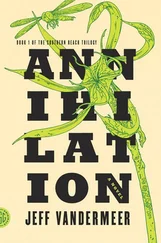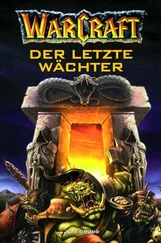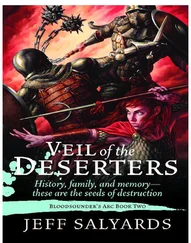Jeff Molofee - NeHe's OpenGL Tutorials
Здесь есть возможность читать онлайн «Jeff Molofee - NeHe's OpenGL Tutorials» весь текст электронной книги совершенно бесплатно (целиком полную версию без сокращений). В некоторых случаях можно слушать аудио, скачать через торрент в формате fb2 и присутствует краткое содержание. Жанр: Программирование, на английском языке. Описание произведения, (предисловие) а так же отзывы посетителей доступны на портале библиотеки ЛибКат.
- Название:NeHe's OpenGL Tutorials
- Автор:
- Жанр:
- Год:неизвестен
- ISBN:нет данных
- Рейтинг книги:3 / 5. Голосов: 1
-
Избранное:Добавить в избранное
- Отзывы:
-
Ваша оценка:
- 60
- 1
- 2
- 3
- 4
- 5
NeHe's OpenGL Tutorials: краткое содержание, описание и аннотация
Предлагаем к чтению аннотацию, описание, краткое содержание или предисловие (зависит от того, что написал сам автор книги «NeHe's OpenGL Tutorials»). Если вы не нашли необходимую информацию о книге — напишите в комментариях, мы постараемся отыскать её.
NeHe's OpenGL Tutorials — читать онлайн бесплатно полную книгу (весь текст) целиком
Ниже представлен текст книги, разбитый по страницам. Система сохранения места последней прочитанной страницы, позволяет с удобством читать онлайн бесплатно книгу «NeHe's OpenGL Tutorials», без необходимости каждый раз заново искать на чём Вы остановились. Поставьте закладку, и сможете в любой момент перейти на страницу, на которой закончили чтение.
Интервал:
Закладка:
The TmpMatrix, TmpVector and TmpNormal structures are also used to calculate the vertex data. TmpMatrix is set once at the start of the function and never changed until Draw is called again. TmpVector and TmpNormal on the other hand, change when another vertex is processed.
float TmpShade; // Temporary Shader Value
MATRIX TmpMatrix; // Temporary MATRIX Structure
VECTOR TmpVector, TmpNormal; // Temporary VECTOR Structures
Lets clear the buffers and matrix data.
glClear (GL_COLOR_BUFFER_BIT | GL_DEPTH_BUFFER_BIT); // Clear The Buffers
glLoadIdentity (); // Reset The Matrix
The first check is to see if we want to have smooth outlines. If so, then we turn on anti-alaising. If not, we turn it off. Simple!
if (outlineSmooth) // Check To See If We Want Anti-Aliased Lines
{
glHint (GL_LINE_SMOOTH_HINT, GL_NICEST); // Use The Good Calculations
glEnable (GL_LINE_SMOOTH); // Enable Anti-Aliasing
} else // We Don't Want Smooth Lines
glDisable (GL_LINE_SMOOTH); // Disable Anti-Aliasing
We then setup the viewport. We move the camera back 2 units, and then rotate the model by the angle. Note: because we moved the camera first, the model will rotate on the spot. If we did it the other way around, the model would rotate around the camera.
We then grab the newly created matrix from OpenGL and store it in TmpMatrix.
glTranslatef (0.0f, 0.0f, –2.0f); // Move 2 Units Away From The Screen
glRotatef (modelAngle, 0.0f, 1.0f, 0.0f); // Rotate The Model On It's Y-Axis
glGetFloatv (GL_MODELVIEW_MATRIX, TmpMatrix.Data); // Get The Generated Matrix
The magic begins. We first enable 1D texturing, and then enable the shader texture. This is to be used as a look-up table by OpenGL. We then set the color of the model (white). I chose white because it shows up the highlights and shading much better then other colors. I suggest that you don't use black :)
// Cel-Shading Code
glEnable (GL_TEXTURE_1D); // Enable 1D Texturing
glBindTexture (GL_TEXTURE_1D, shaderTexture[0]); // Bind Our Texture
glColor3f (1.0f, 1.0f, 1.0f); // Set The Color Of The Model
Now we start drawing the triangles. We look though each polygon in the array, and then in turn each of it's vertexes. The first step is to copy the normal information into a temporary structure. This is so we can rotate the normals, but still keep the original values preserved (no precision degradation).
glBegin (GL_TRIANGLES); // Tell OpenGL That We're Drawing Triangles
for (i = 0; i < polyNum; i++) // Loop Through Each Polygon
{
for (j = 0; j < 3; j++) // Loop Through Each Vertex
{
TmpNormal.X = polyData[i].Verts[j].Nor.X; // Fill Up The TmpNormal Structure With The
TmpNormal.Y = polyData[i].Verts[j].Nor.Y; // Current Vertices' Normal Values
TmpNormal.Z = polyData[i].Verts[j].Nor.Z;
Second, we rotate the normal by the matrix grabbed from OpenGL earlier. We then normalize this so it doesn't go all screwy.
// Rotate This By The Matrix
RotateVector (TmpMatrix, TmpNormal, TmpVector);
Normalize (TmpVector); // Normalize The New Normal
Third, we get the dot product of the rotated normal and light direction (called lightAngle, because I forgot to change it from my old light class). We then clamp the value to the range 0-1 (from –1 to +1).
// Calculate The Shade Value
TmpShade = DotProduct (TmpVector, lightAngle);
if (TmpShade < 0.0f) TmpShade = 0.0f; // Clamp The Value to 0 If Negative
Forth, we pass this value to OpenGL as the texture co-ordinate. The shader texture acts as a lookup table (the shader value being the index), which is (i think) the main reason why 1D textures were invented. We then pass the vertex's position to OpenGL, and repeat. And Repeat. And Repeat. And I think you get the idea.
glTexCoord1f (TmpShade); // Set The Texture Co-ordinate As The Shade Value
// Send The Vertex Position
glVertex3fv (&polyData[i].Verts[j].Pos.X);
}
}
glEnd (); // Tell OpenGL To Finish Drawing
glDisable (GL_TEXTURE_1D); // Disable 1D Textures
Now we move onto the outlines. An outline can be defined as “an edge where one polygon is front facing, and the other is backfacing”. In OpenGL, it's where the depth test is set to less than or equal to (GL_LEQUAL) the current value, and when all front faces are being culled. We also blend the lines in, to make it look nice :)
So, we enable blending and set the blend mode. We tell OpenGL to render backfacing polygons as lines, and set the width of those lines. We cull all front facing polygons, and set the depth test to less than or equal to the current Z value. After this the color of the line is set, and we loop though each polygon, drawing its vertices. We only need to pass the vertex position, and not the normal or shade value because all we want is an outline.
// Outline Code
if (outlineDraw) // Check To See If We Want To Draw The Outline
{
glEnable (GL_BLEND); // Enable Blending
// Set The Blend Mode
glBlendFunc (GL_SRC_ALPHA ,GL_ONE_MINUS_SRC_ALPHA);
glPolygonMode (GL_BACK, GL_LINE); // Draw Backfacing Polygons As Wireframes
glLineWidth (outlineWidth); // Set The Line Width
glCullFace (GL_FRONT); // Don't Draw Any Front-Facing Polygons
glDepthFunc (GL_LEQUAL); // Change The Depth Mode
glColor3fv (&outlineColor[0]); // Set The Outline Color
glBegin (GL_TRIANGLES); // Tell OpenGL What We Want To Draw
for (i = 0; i < polyNum; i++) // Loop Through Each Polygon
{
for (j = 0; j < 3; j++) // Loop Through Each Vertex
{
// Send The Vertex Position
glVertex3fv (&polyData[i].Verts[j].Pos.X);
}
}
glEnd (); // Tell OpenGL We've Finished
After this, we just set everything back to how it was before, and exit.
glDepthFunc (GL_LESS); // Reset The Depth-Testing Mode
glCullFace (GL_BACK); // Reset The Face To Be Culled
glPolygonMode (GL_BACK, GL_FILL); // Reset Back-Facing Polygon Drawing Mode
glDisable (GL_BLEND); // Disable Blending
}
}
* DOWNLOAD Visual C++Code For This Lesson.
Lesson 38
Welcome to the 38th NeHe Productions Tutorial. It's been awhile since my last tutorial, so my writing may be a little rusty. That and the fact that I've been up for almost 24 hours working on the code :)
So you know how to texture map a quad, and you know how to load bitmap images, tga's, etc. So how the heck do you texture map a Triangle? And what if you want to hide your textures in the .EXE file?
The two questions I'm asked on a daily basis will soon be answered, and once you see how easy it is, you'll wonder why you never thought of the solution :)
Rather than trying to explain everything in great detail I'm going to include a few screenshots, so you know exactly what it is I'm talking about. I will be using the latest basecode. You can download the code from the main page under the heading "NeHeGL I Basecode" or you can download the code at the end of this tutorial.
Читать дальшеИнтервал:
Закладка:
Похожие книги на «NeHe's OpenGL Tutorials»
Представляем Вашему вниманию похожие книги на «NeHe's OpenGL Tutorials» списком для выбора. Мы отобрали схожую по названию и смыслу литературу в надежде предоставить читателям больше вариантов отыскать новые, интересные, ещё непрочитанные произведения.
Обсуждение, отзывы о книге «NeHe's OpenGL Tutorials» и просто собственные мнения читателей. Оставьте ваши комментарии, напишите, что Вы думаете о произведении, его смысле или главных героях. Укажите что конкретно понравилось, а что нет, и почему Вы так считаете.








